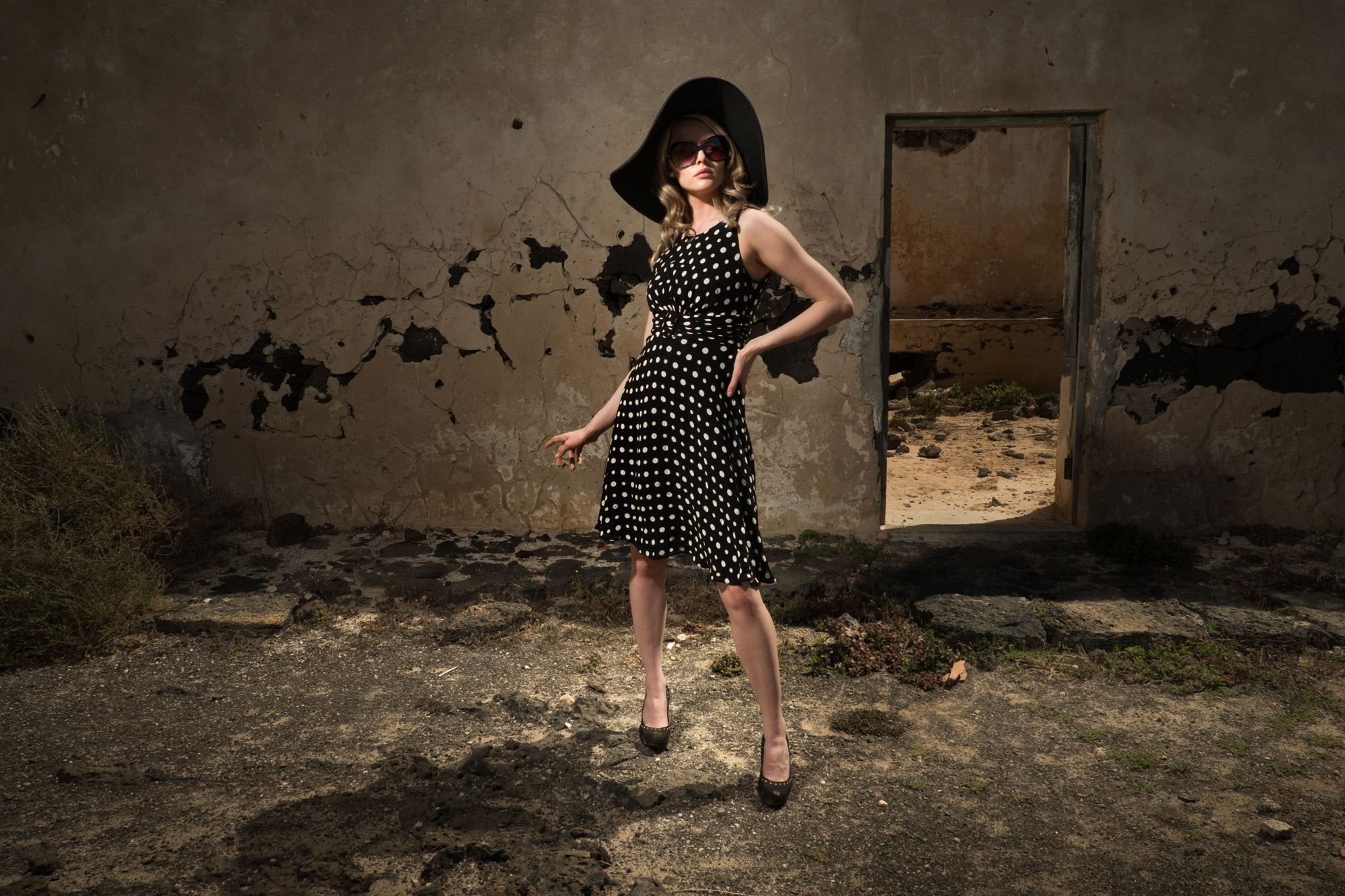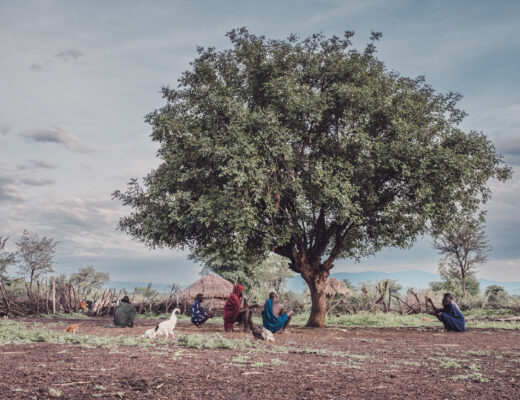In this post I will share with you how I find the locations that I use for my photography. I’m often asked how so here it is. It doesn’t matter what kind of location I want – the process is fairly similar. Unlike other shooters I don’t rely on intel, networking or the whispers from the underworld on urbex forums. I’ve often found the data from them to be out of date. That led me to create my own workflow and use this process to find city street areas, abandoned houses, old factories and other interesting locations to shoot in.
What makes the perfect location?

01. The perfect location can be tucked away on city streets, in the middle of a desert or in open countryside. If you know what you want you will know where to start looking.
There are a lot of locations that I want to find each year. I make sure that I know what I’m looking for before I start each session otherwise I drift aimlessly and loose the will to carry on. A bit like shopping really.
City streets
A great city location is an area full of picture opportunities closely packed together. I like to work within a 500m radius of my start point and aim for enough variety of backgrounds and shoot spots to last me a whole shooting day. I usually start at a coffee shop so I can meet my client in comfort before we venture out to start shooting. I shoot come rain or shine as there is nothing more frustrating than having to cancel a shoot for bad weather. I shoot in the months from March to September here in the UK because cold weather can make the process painful. As I occasionally have to shoot in the rain I need the option of covered areas to work under. These can be pedestrian underpasses, areas beneath flyovers, railway bridges, canal tunnels or building canopies over entrance porches etc. A perfect city location also has cafés with toilet facilities, a place for lunch and the opportunity to shoot without being moved on by police or security staff.
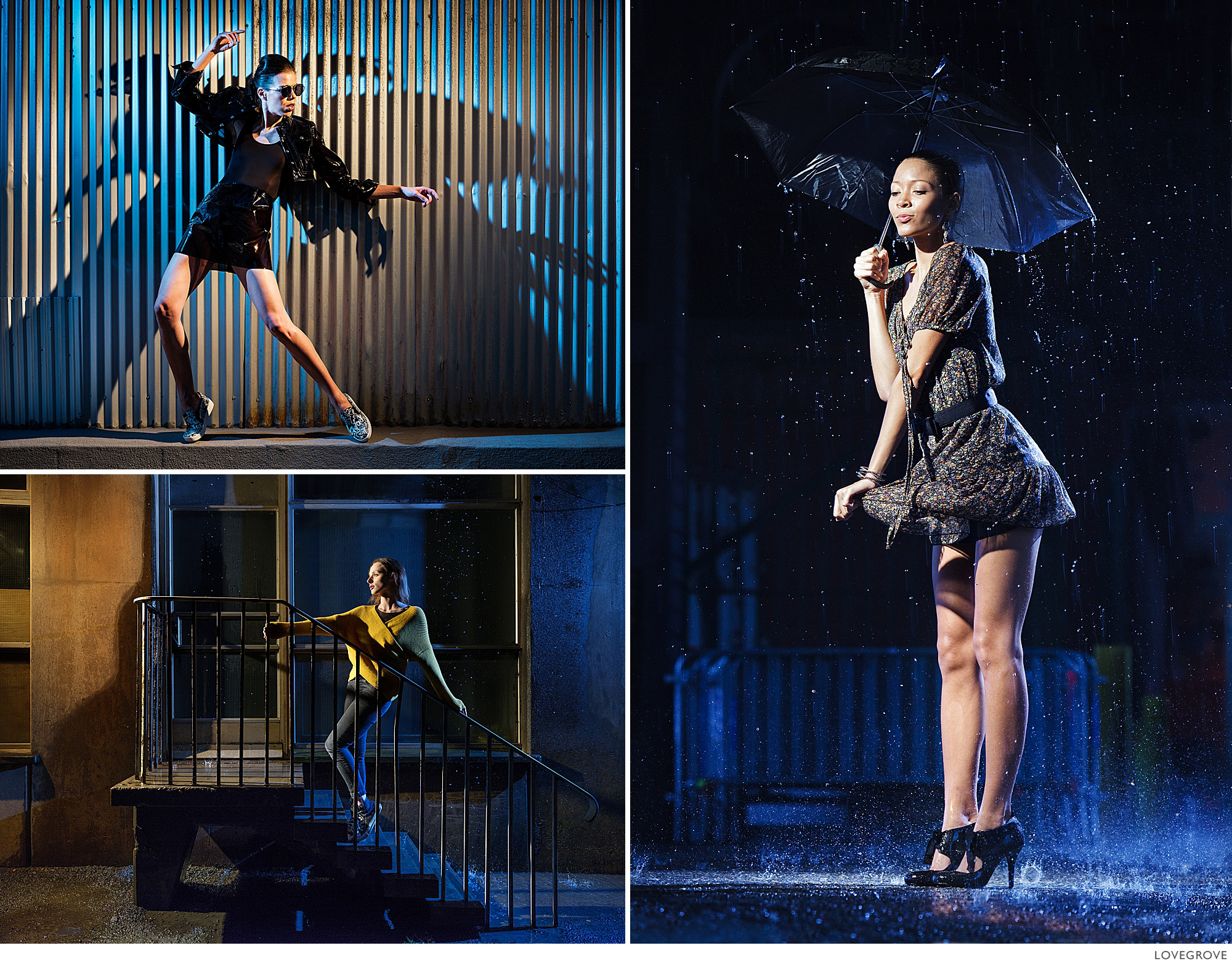
New York, top left and right: Under the Manhattan Bridge and under the High Line. Bottom left: Bristol UK under the Cumberland Basin Bridge.
Ubex (urban exploration)
A great urbex location is one that can be entered without the use of tools. It has to be relatively safe. There are always risks but I always do a risk assessment on site to keep things in check. I look for potential falling objects, drops or holes in floors, a risk of collapse and chemical or biological waste etc. With this in mind I have shot in burned out factories, abandoned monasteries and stately homes.

Top left: Manchester UK in Castlefield under the tramway. Bottom Left in the dockside at Bristol UK. All other shots in a burned out factory in Charleroi in Belgium.
Rural abandoned properties
The best rural locations are ones that no longer serve a purpose and have fallen into disrepair. Each country and region has its own reasons for abandoning property. Italy has a lot of earthquake damaged villas and hilltop towns. Spain and Portugal have a lot of farm buildings that were abandoned when farms merged or new farms were created. They just haven’t got round to demolishing the old buildings. The textures and colours that have been created with the passage of time are far better than any painted studio back cloth can deliver.
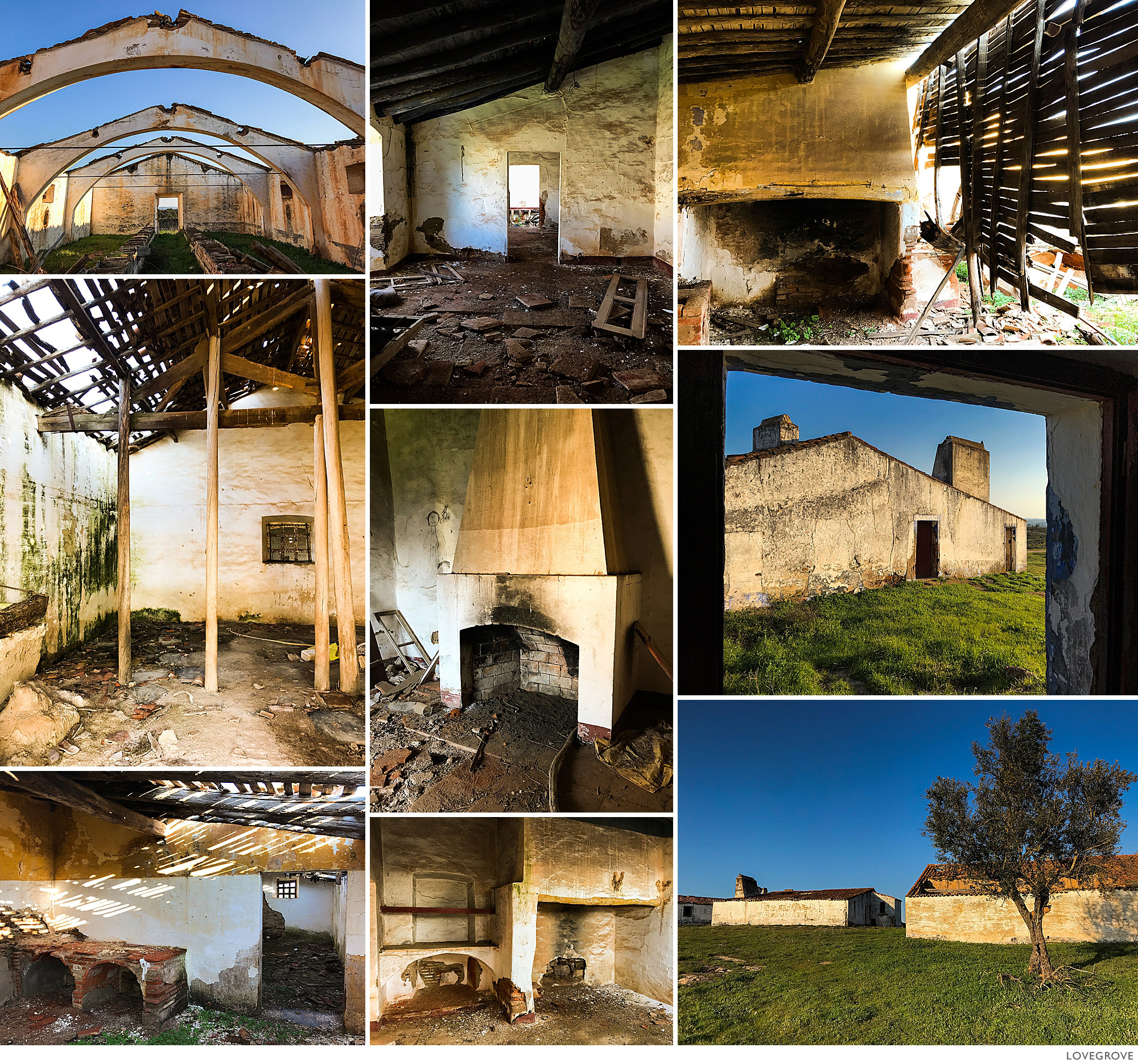
Farm buildings are great, out of the way locations that offer interesting textures and colours. These ones are in Portugal and about 300m from a main road but out of sight of the road.
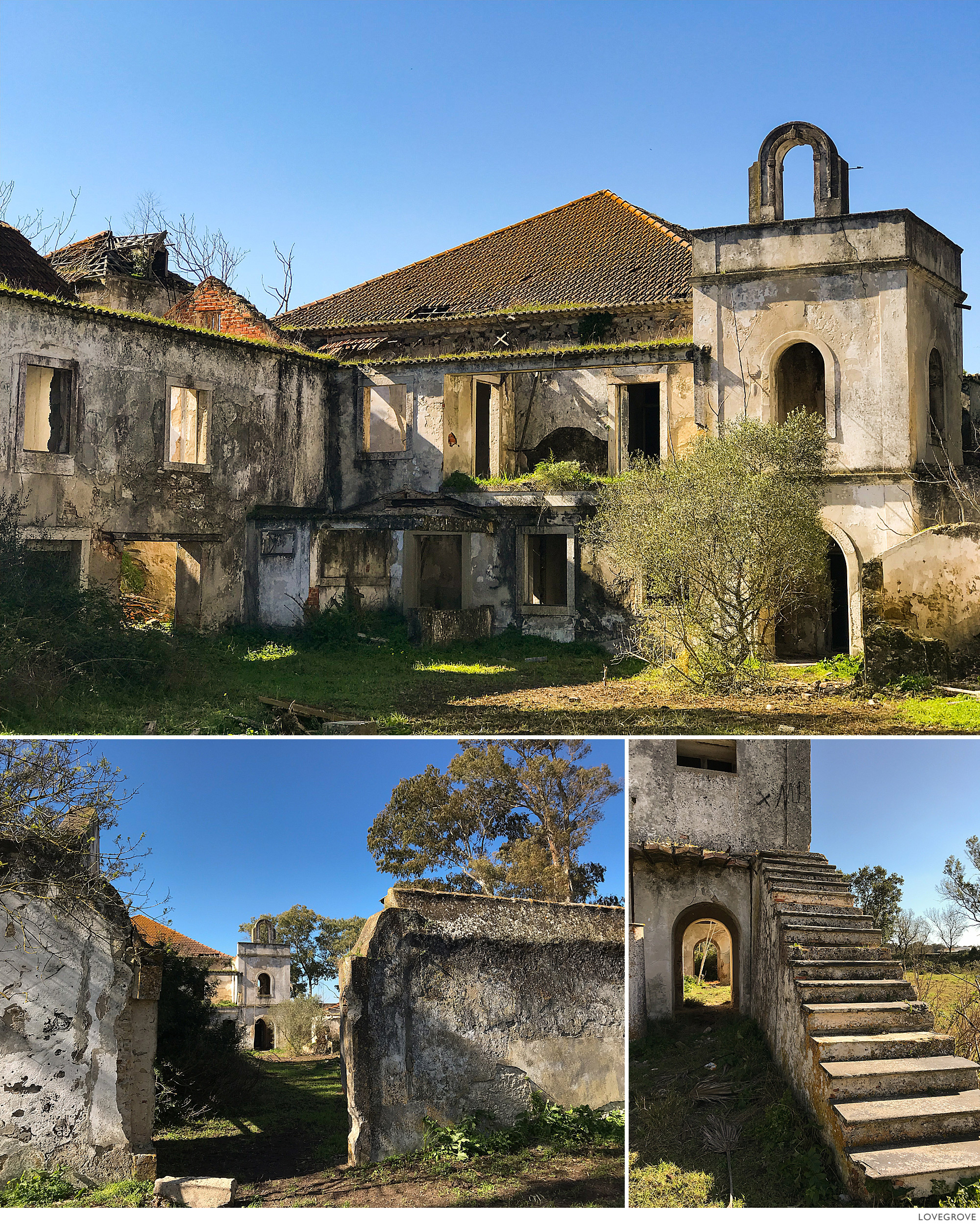
This abandoned mansion in Portugal is probably the best location I have found to date. I’m going back there in September as part of this workshop adventure.
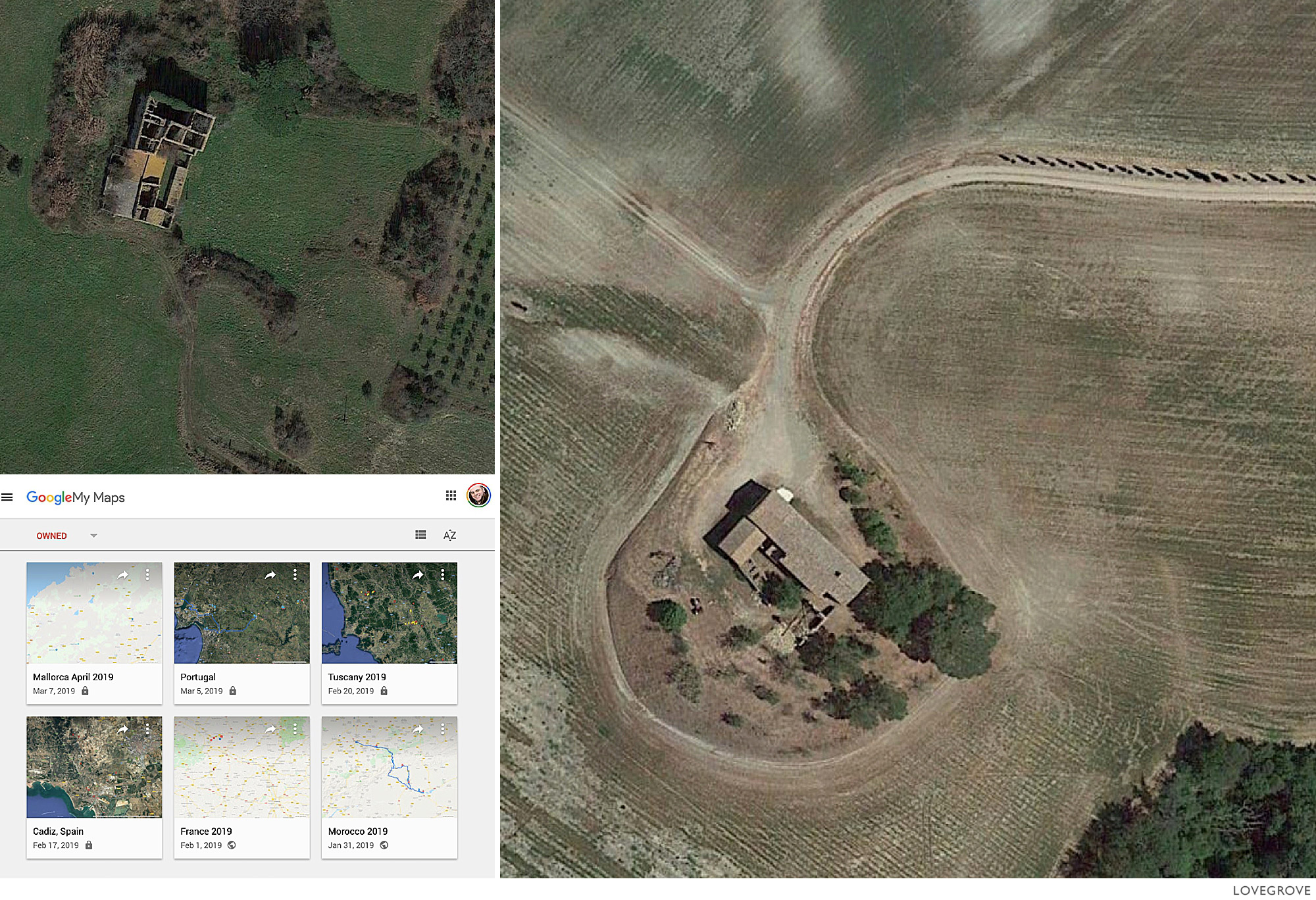
The Google Earth view is how I find the prospective shoot spots and I plot their locations on a custom Google Map. Bottom left: I create maps using Google My Maps and I plot everything on them. Parking locations, hotels, cafés and I even create driving route layers that show me the distances between points. I have over a dozen maps that I have created and I’ve even made maps for holidays too.
Finding Locations
I create a good working space as this helps the process no end. I like to do my research in the evening so I open a bottle of Saint-Émilion wine, put on some music, turn the lights down low and fire up the laptop. Google is my friend and I’ll have a Google Earth window open, Google Maps too and I rely on Google Chrome for everything else including checking local events that might clash with my shoot, cafe locations, tide times etc. Finding the location is just one part in the jigsaw that makes up a successful shoot.
The search
For a city location search I invariably start with Google Earth looking for intersections of rail, tramways, roads, rivers and canals. These provide multi level zones with bridges and tunnels. These are ideal for controlling the light and staying dry on the shoot. I then use the Google Maps overlay to find parking locations, somewhere to meet and a place for lunch . Google Street View is the next tool I use to look for photography backgrounds. A good background can be a stainless steel louvre at the back of a commercial building or a wall of glass at the foot of an office block with interesting reflections. Being able to wander around at street level from the comfort of my home is a real bonus at the planning stage. I can add virtual pins and create a walking route. I follow the links on Google Maps to business websites to see the opening times of cafe’s or check on parking prices etc. Finally I use the free tourist information websites with ‘what’s on’ calendars etc. I don’t want to get to a location and find it’s fenced off for The tour of Britain cycle race or a half marathon etc.

This area of Manchester has the lot. It has a canal, a river, tramways going over roads and roads going over canals. There are subways and cafés too.
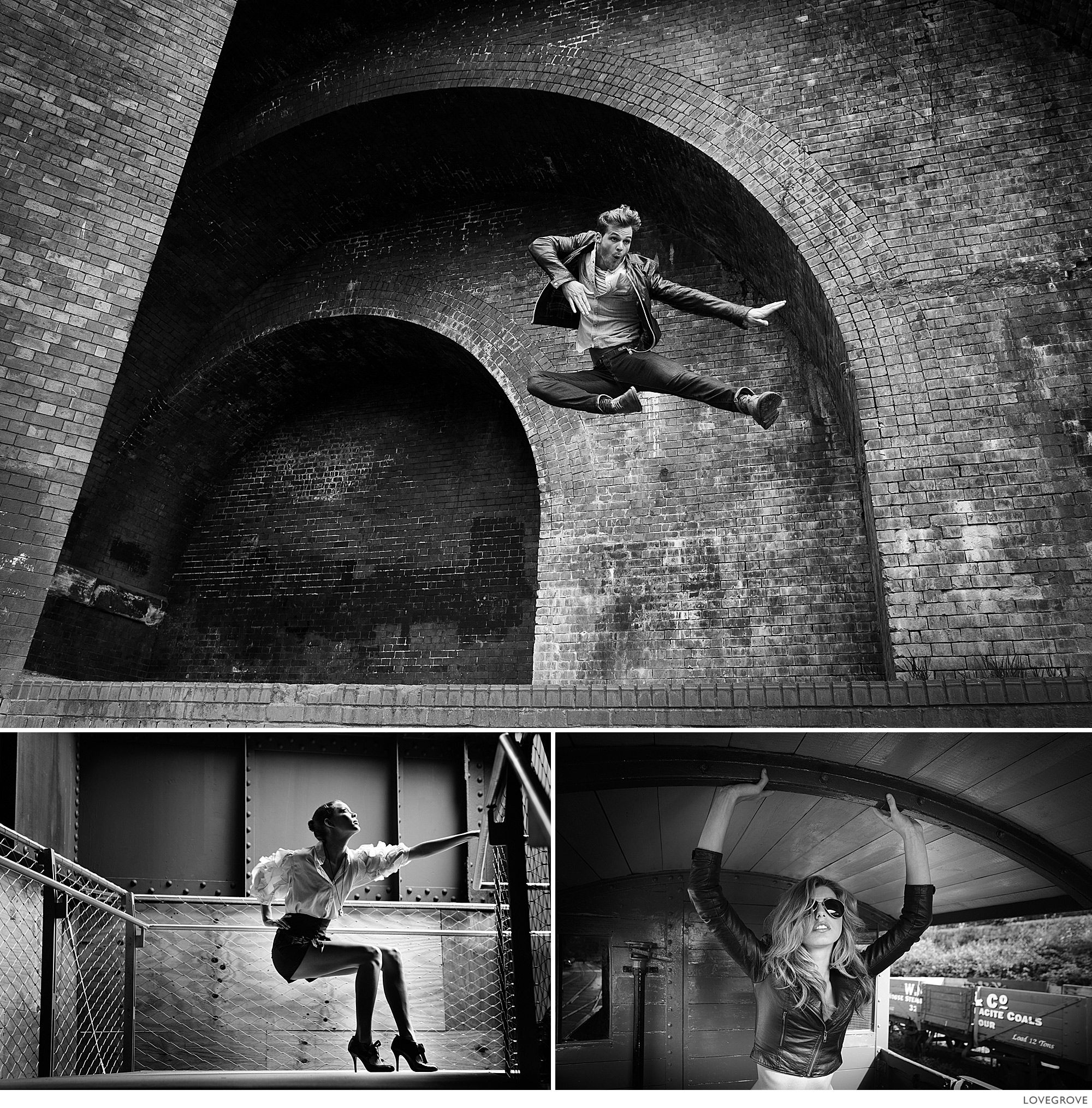
Top: Deansgate in Manchester has some fantastic Victorian brick structures. Just as an aside, I used an X-Pro1 with the 18-55mm zoom lens to capture this action shot. Bottom Left: New York in the Meat Packing district. Bottom right: In an abandoned rail wagon on Bristol waterfront.
For rural locations I start with a city and head out of town on a main road using Google Earth. I like a view that gives me about 500m each side of the road. I then zoom in on anything interesting for a closer look. Once I start to find interesting places with roof tiles missing I do a wider search of the whole area. I usually find clusters of potential locations in one place. Once I have a few clusters of pins in a map I plan a recce that encompasses all the pins. This way I’m sure to find some winners.
The recce
This is a process I adopted from my days at the BBC when we used to go and look around a location to fine tune a schedule and plan the technical requirements of a shoot. This has to happen after the online work has been done because search sites are vast and a certain amount of narrowing down is vital. At the recce I’m looking to confirm the suitability of a location with regards to safety and security. I love disused at railway lines and dock sides, in fact all kinds of places that present hazards. I can then do an assessment, schedule the times we will be at each location and what kit I’m likely to need. I need to confirm several things like the suitability of covered spaces for lighting control, backgrounds and textures. I use my phone camera to record shot opportunities and pin the locations on my Google map. If it’s raining or overcast when I recce I plan potential shots noting the position of the sun using the Photo Pills app on my iPhone.
I take shots of any new locations that I stumble upon on my iPhone so that I can pin these locations exactly on my map later. Every smartphone shot has the GPS data embedded. I just pop the shots into Lightroom, click on the maps module and it plots all my iPhone shots on a convenient map. I can then transfer the exact locations to my custom Google Map as required.

A decent rural location provides shelter from the rain as well as interesting natural light. I like to use areas of buildings where the roofs are intact as it cuts out the top light. These shots were taken in Portugal, Italy, Spain and Morocco.
Tip: To avoid getting moved on by security or police at your city shoot, identify any privately owned commercial land that you want to shoot on and find out who the head of PR is for the owners. Give the PR team a call, email them proof of your public liability insurance and ask permission to do a non commercial shoot. It is a PR persons job to say yes. It is a security persons job to say no. The PR person will inform security that you are their with permission and the security person might even pop along to watch you shoot and keep the public out of your shot as required.
Stay safe and have fun.

